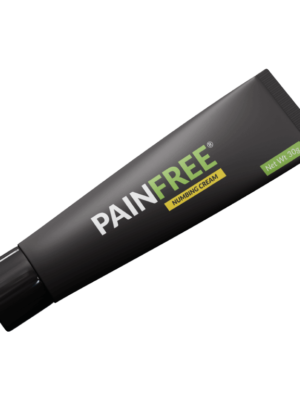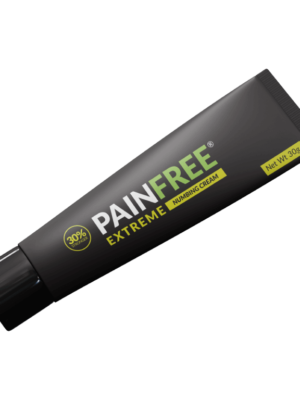Aftercare of tattoos & cosmetic treatments.
HOME > Blog
Aftercare of tattoos & cosmetic treatments.
This post is about the time after getting tattoos and cosmetic treatments. Too many forget about the time afterwards when the skin is exposed and vulnerable, the time when it needs to heal and be cared for.
It’s natural to forget the healing process, focusing mainly on the treatment itself, where the combination of a bit of nervousness and excitement occurs. Nervousness is many times about the pain impact and where the excitement comes from, to see the finished result.
Many people want a painless experience and investigate the market for magic cream, anesthetic cream or pain relieving cream to achieve painless tattoo or cosmetic treatment.

Aftercare – The proper care of tattoo & cosmetic treatments
Good advice for care and aftercare of new tattoo
1.Moisture and protection
2. Remove the foil and clean the tattoo
After a few hours, remove the foil and clean the tattoo of blood and excess ink. It is recommended to use a natural soap that is fragrance-free. Cleaning tattoos helps the skin to better form wound crusts.
Be gentle on the skin and tattoo when cleaning. Therefore avoid rubbing the area dry, instead dab until the area is dry.
After the tattoo is washed, it is recommended to let the skin / tattoo air for about 30 – 60 minutes.
After air-drying the tattoo, it is important to apply a healing cream to the tattoo. The most used and well-known product for aftercare is panthenol cream, due to its healing properties.
Spread a thin but covering layer of panthenol cream over the tattoo. Do not cover the tattoo immediately, let the cream work so that the skin has a chance to “breathe”.
Panthenol cream also known as panthenol ointmentFor the record, this is the same product.
A tattoo doesn’t just require care the first day you get it done.
In the first week or 7 days after getting the tattoo, it is recommended to apply panthenol ointment frequently every day.
Keeping the tattoo clean and dry is a very important part of the healing process. Allow the tattoo and area to air, especially after applying panthenol ointment, let the ointment penetrate and dry.
Avoid softening the tattooed area during the first month. A shower is fine, but avoid tubbing, going to spas and swimming pools.
In addition to avoiding softening the tattoo, avoid water in swimming pools and spas due to chlorine content.
If you get a tattoo in the summer, you should protect the tattoo from sunlight and avoid sunbathing.
Sunbathing also includes a solarium, even if it is artificial light. It is recommended to avoid direct sunlight even if you use sunscreen with sun factor. In the worst case, the colors of the tattoo can fade when the tattoo gets direct sunlight.
Therefore avoid:
- Direct sunlight
- Chlorine
- Spa stays
- Swimming pool
- Sunbathing & saltwater
The healing process can vary greatly, depending on the size of the tattoo, how well the body is able to recover, and how well you are able to care for the tattoo and skin area. The healing period can therefore stretch from a week to several months.
Because the skin has been “open”, scabs are formed which then need to heal. Most people know how much a healing wound can itch, the same can happen with tattoos.
Avoid scratching the tattoo or picking the scabs during healing, care for the area with good ointment.
In addition to nourishing and healing creams, you can eat extra vitamin C and immune-boosting vitamins. Tattoos stay on your body for life, so it’s important to take care when it comes to care and aftercare.
Both the skin, the tattoo and you will be grateful for having set aside time for aftercare, after the healing period is over.
Contact your tattoo artist if your tattoo is losing colour or you notice other things that you’re not sure are correct. Many tattoo artists are truly dedicated because it is their craft and talent that shows on the skin and thus to the outside world. It is common to review the tattoo after 6 weeks, if necessary to correct small mistakes. Remember that tattooists are specialists, so ask your tattooist if you have the slightest doubt.
Cosmetic treatments include tattoo removal via laser, permanent hair removal & micropigmentation, just to name a few. Today, laser technology is used in many different cosmetic treatments:
- Hair Removal
- Reduction of wrinkles
- Treatment of scars from acne
- Carbuncles on the body and face
- Removal of tattoos
Aftercare or skin care is extremely important to ensure the best conditions for the skin to heal. Aftercare is mainly about reducing the risk of infection developing in the area, as well as preserving the colour and protecting the skin area.
Care and aftercare aim to accelerate the healing of the skin to achieve the best final result, this also applies between treatments.
But before we get to Aftercare and the good advice, we can mention the possibility of obtaining painless laser treatment if you have not come for treatment yet.
Many fear the pain associated with laser treatment. The pain is of course individual, as we feel the laser differently, and we have different pain thresholds.
But if you want pain-relieving and pain-free laser treatment Painfree local anaesthetic cream is effective whatever cosmetic treatment you are going for.
After cosmetic tattoo treatment, the area should be washed off after 1-2 hours. It is recommended to wash with a green or natural soap that without perfume and use lukewarm water.
Avoid rubbing the skin area dry, but use a cotton pad that is clean and dry. Pat the area dry, as the skin may be sore after treatment, so care for the area gently.
Apply aftercare care cream to the area in a thin layer. Aftercare creams, such as Panthenol Cream, contain the B5 pro vitamin dexpanthenol, which increases natural cell activity so skin heals faster. Choose a Panthenol Ointment that is fragrance-free.
It is recommended to apply aftercare every hour on the day of treatment, as well as the following day.
Here you should use aftercare Panthenol cream between 3 – 5 times a day, this helps the healing. During the same period, it is recommended to avoid over-watering the area.
To best protect the area that has been under cosmetic treatment, such as eyebrows, it is important that they are kept dry.
You can apply a thick layer of Panthenol cream before you go into the bath, as it will protect against the water. Remember to remove the thick layer after the bath, and apply a thin layer afterwards.
As with new tattoos, sunbathing is discouraged including artificial sunbathing via tanning beds, avoiding swimming pools/swimming in the sea as the water is either chlorinated or salty. Spa stays should also be avoided because of the heat, which contributes to overheating of the body.
Some cosmetic practitioners advise against exercise in the first weeks after treatment. Ask your therapist if you have any doubts.
Aftercare and care after cosmetic treatments is crucial for a good result, the industry estimates that the correct aftercare covers the entire 70% for a good result.
So don’t hold back with aftercare, set aside the time it takes to heal. In the end, the money and your time are well spent.



